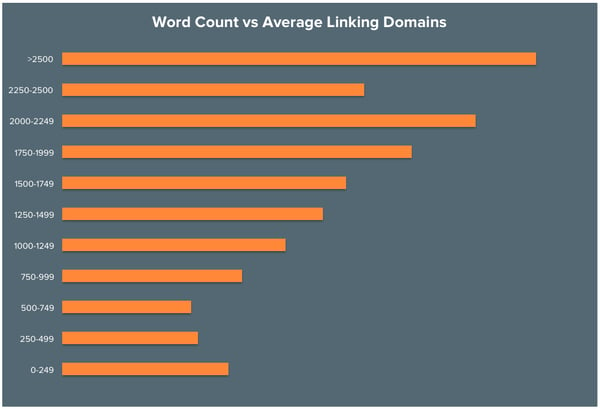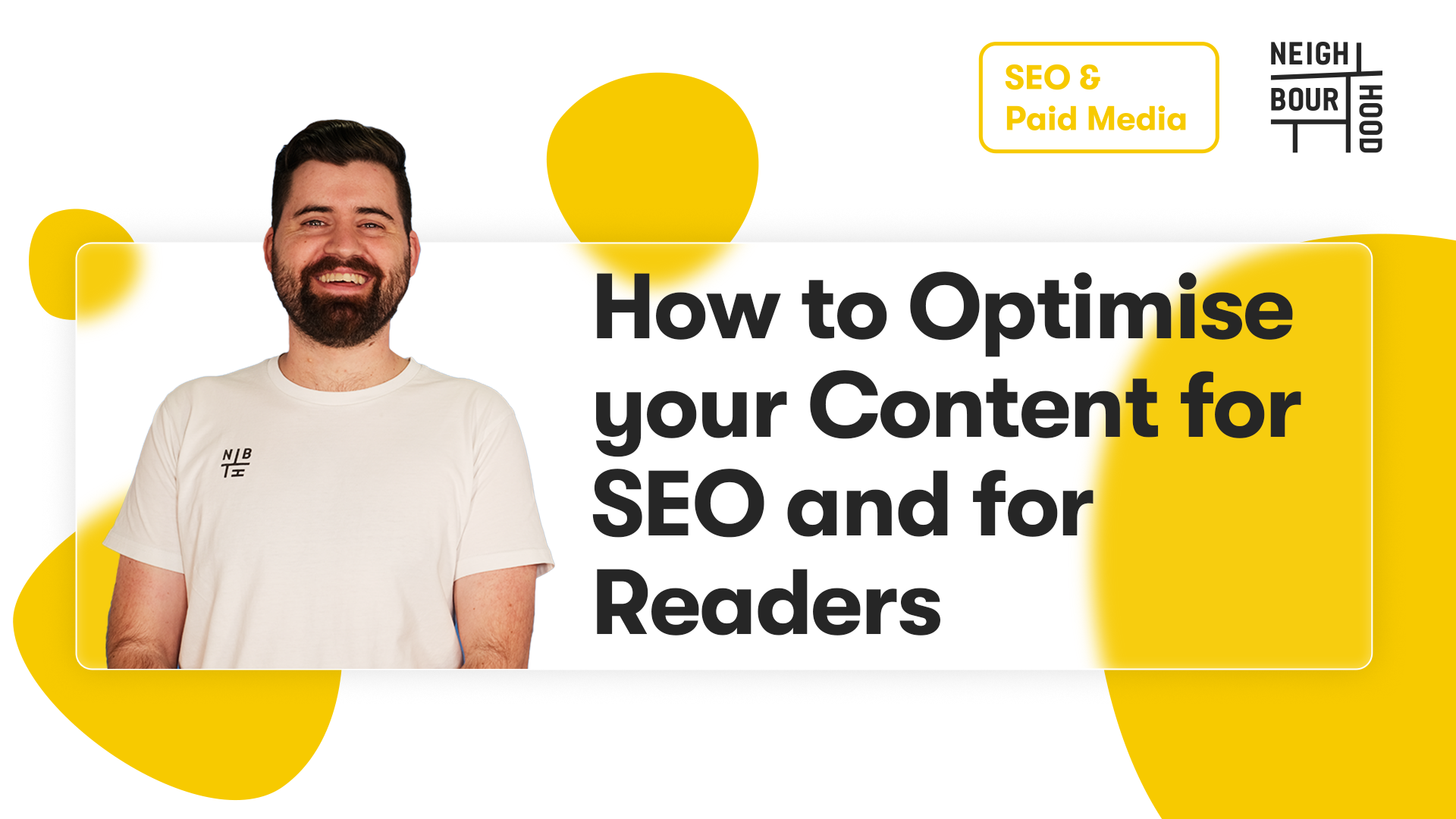SEO has come a long way as a tool for getting your brand found in search engines. No longer is it a shady attempt for you to climb the SERP ladder by awkwardly stuffing your 'blog about SEO', with links to “How to make a quaran-tini” because you know it’s a hot topic at the moment.
Here we are in 2020, and search engines are way smarter, and audiences are more search-savvy. With the amount of content flooding the web each and every day, ranking high on search engines and engaging your readers into potential leads has never been more important. However for any Inbound marketer, this balancing act could prove to be challenging as you’ll need to pull out all the stops to ensure your content is SEO-optimised, while also capturing and retaining your reader’s attention. And to do so, you must have the answers they’re looking for.
Because Google has gotten freakishly good at guessing a user’s intent, it's going to show results that best answer what the searcher really wants. For example, if Georgia types in the search bar “What can my sausage dog eat?”, she’s definitely not going to get results on types of sausages her dog can eat. Instead, she’s going to get results for what to feed her Dachshund (Don’t worry, I really checked).
This is why optimising your content for SEO and your readers is really important – in order to rank high, you must meet your reader’s actual intent. But what about the how? We’ve got the answers for that.
Tip #1: Know your “Why”
Out of the 5 W’s (Who, What, Where, When Why) the Why generally carries the most weight for most businesses, as it also rings true to the content you want to put out. Asking those questions that examine the purpose of your content like “What’s the main message I’m trying to get across?”, or “What value do I want my audience to receive?”, helps out with the redialing of your content compass to ensure that your message is reaching the right audience. Pumping out content just for the sake of it without knowing your “why” can potentially leave your efforts fruitless and you probably exhausted.
To make a good example, below is a little “why” analysis I did prior to writing this article:

As easy as that. That can be all it takes to have a guiding light for your piece of content.
Tip #2: Understand what you’re writing about
Do you remember your first time in the gym where you felt like a stranger in a foreign land and hopelessly got on every machine that was available? You weren’t sure if you meant to pull this, put your leg on that or whether you’re allowed to copy the person next to you. Much like the uncertainty and awkwardness you might’ve experienced, writing content that you’re not 100% on can leave your readers with more unanswered questions.
This is where research comes into play. With information literally available at the tip of your fingers, this day and age really cannot make it any easier for you to get juiced with knowledge on any given topic. Of course you’ve got to consider the credibility of where you’re getting your information from, but other than that, some reputable educational goldmines to name a few (that I’ve used as well) include YouTube, LinkedIn Learning, Elsevier and HubSpot Academy.
Having a good grasp on what your content is about fundamentally enables you to write with authority which can make you a trustworthy figure to your readers, meaning they’ll be likely to engage with your content once it comes around again.
Understanding your content also goes hand in hand with knowing what keywords you’ll use. A method we like to do when doing keyword research is using Google Keyword Planner and visiting AnswerThePublic. Both tools provide content strategists like you insightful data on what terms and keywords people are searching the web for.
Tip #3 Solve it Creatively, but Casually
Now that you understand the purpose of your content and what it's about, it's time to solve your customer’s pain points. Writing engaging content that hooks your audience in is a sure-fire way for your SEO efforts to find success.
People love stories. Not the tool in Instagram where you share which mountain you drove for two hours for and conquered over the weekend... the one that boosts our emotions and gives us the ability to make connections with people. That ‘feel good’ hormone is a helluva drug!
Capitalising storytelling into your content can help your readers be in the same emotional wave-length as the message you’re trying to convey. Spark their imagination with similes, personal anecdotes – that way you’ll come across as someone that’s human. It's just a human to human thing.
Because you’re writing for a human not a robot, ensuring that you’re using easily understandable language can make sure that your readers are truly getting what they clicked on your content in the first place. It's not about just getting them on your website, but more about giving them valuable takeaways from engaging with content from your brand. Try to avoid using industry jargon like “diminishing marginal rate of return” when explaining concepts. Unless you’re talking to a reader highly interested in the nature of a business’ economics, break it down into more digestible, user-friendly words.
One way we like to practice writing out content is to write the topic as if you’re explaining it to your peers for the very first time, so the key is writing in plain language. As a tool, you might benefit from exploring empathy maps to get into the shoes of who would be clicking in your content. Don’t forget: the more you can inspire your audience succinctly, the more likely they’ll be sharing your content across their socials.
Tip #4: Size matters… contextually
Looking back when every content marketer swore that 300-750 words was enough because everything needed to be bite-sized, everyone must’ve been rejoicing like a Friday afternoon because content plans would always look full – it was just easy to pump them out.
Nowadays, long-form content is all the rage and its shorter counterpart is down the drain. HubSpot conducted a study which revealed that content with more than 2, 500 words earned the most backlinks and social shares.


If you’ve just entered the realm of content marketing, those figures can seem pretty daunting. Writing about a topic that much can get pretty exhausting, let alone for your readers who could get stuck scrolling for ages. Just when they thought they’ve gotten to the end… and oop here comes another point!
If you're wondering how to satisfy Google’s neediness without spending eons going through a single piece of content, we’ve got the solution just for that!
We and many other inbound marketers vouch for the topic cluster model to respond to user queries.
Essentially, the topic cluster model lets you pick the general topics you want to rank for in search engines, then connect your content together with links while using the same keywords related to that topic. The general topic pages are called pillar pages and are best written by briefly covering the subtopics of the general term. Because Pillar pages have the ability to cover just about anything related to a specific topic, this where writing long-form content comes in really handy.
This is where you’ll want to flex your mighty knowledge to provide value to your readers. And if done right, your SEO efforts in linking your cluster pages together will signal to Google that you have authority on that topic.
While you also want your cluster pages jam packed with valuable content, you don't necessarily have to write thousands of words to satisfy SEO. If you’ve got all the information and mental power, then go nuts! Following the topic cluster model already signals to Google that you are building domain over a particular term, so don’t worry if your content didn’t reach the limit. Ensuring its relevance is far more important.
If you're looking for more info on pillar pages and topic clusters - you’re in luck, because we wrote an article about this that explains it more in depth.
Tip #5: Quality over Quantity
Ever heard that saying “Content is king”? It's true, especially in the world of Inbound Marketing. However, I would like to add a single word that alters what the phrase stands for.
“Quality content is king”
Ah, much better. Having quality content puts you in a much better position to your audience in a time where they are constantly being bombarded with content from your direct and indirect competitors. In fact, Adobe reports that consumers now spend more than 8 hours of the day engaging with content online.
With so much content going around the web, capturing your readers true intent, can make them feel cared for. Focusing on the conversations you’re having with your readers will make them see you as authentic and transparent.
This is the main reason why you’ve got to know your 'why'. Being in-tune with the purpose of your content helps you naturally understand what the reader’s pain points are. Couple that with a splash of creative elegance in problem-solving, and bam! You’ve got yourself some killer quality content.
Aaand that’s it folks! 5 tips on how you can master optimise your content for SEO as well as your readers. Turns out, it doesn’t have to be one big balancing act after all, as catering to your audience’s pain points well with an authentic purpose, naturally ticks your content into Google’s “Good SEO” books.”




